Unlocking BYD's Cutting-Edge Features: A Leap Forward in Electric Mobility
![]() 03/19 2025
03/19 2025
![]() 491
491
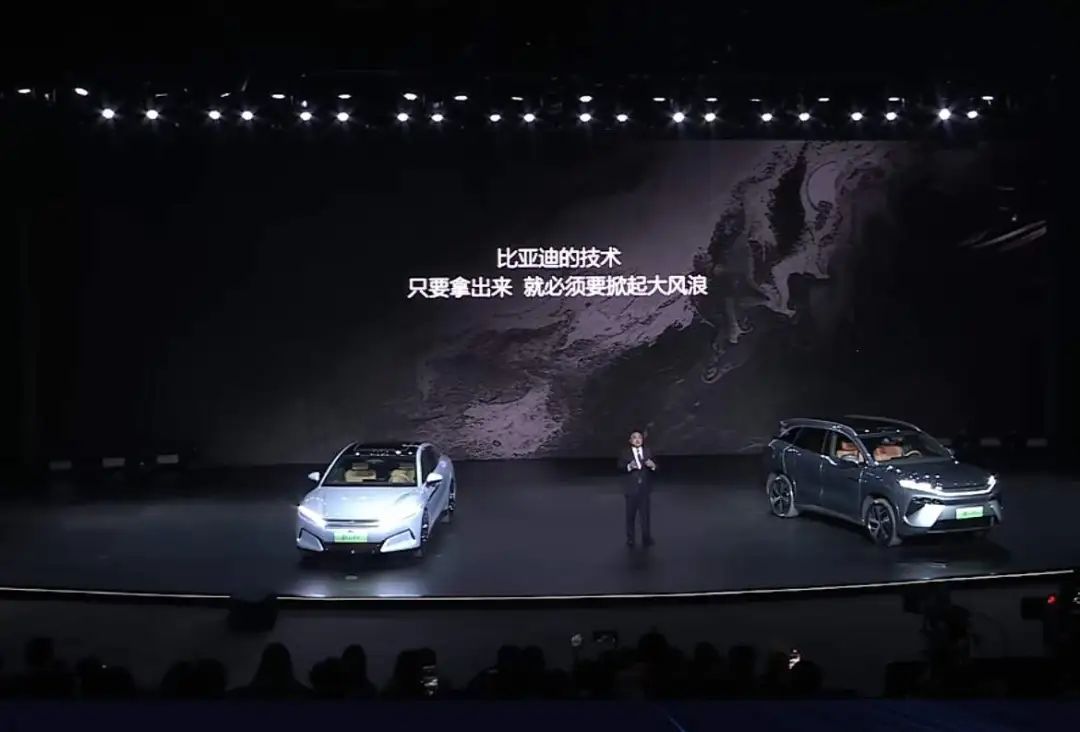
Charge for 5 minutes, drive for 400 kilometers
Author | Wang Lei
Editor | Qin Zhangyong
Just 40 days into 2025, BYD has already staged three groundbreaking technology launches.
First, it democratized intelligent driving by bringing smart vehicles within the reach of the masses, priced at under 100,000 yuan. Next, it unveiled the Lingyuan on-board drone system, elevating the playability of intelligent vehicles to new heights. Last night, BYD returned to its core electric technology, sending shockwaves through the automotive industry.
It officially introduced the Super e-Platform, which, under this advanced pure electric technology platform, boasts a maximum charging voltage of 1000V, a maximum charging current of 1000A, and a maximum charging power of 1 megawatt (1000kW), achieving the world's first 10C fast charging.
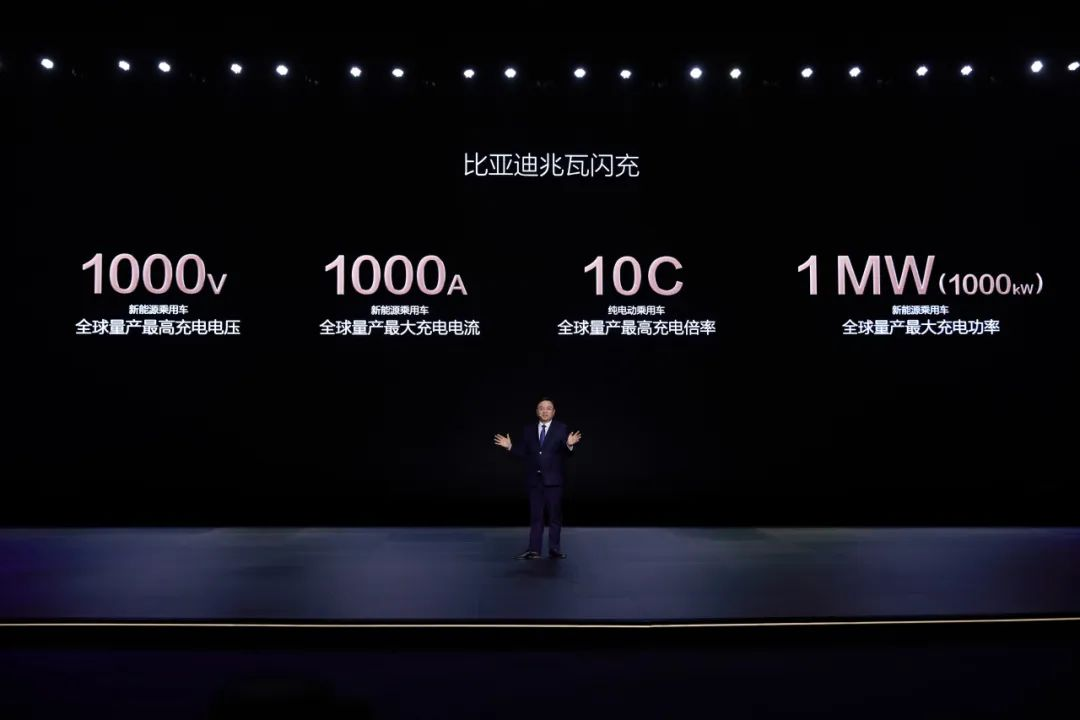
Previously, 5C batteries were considered the pinnacle in mass-produced vehicles, but BYD's newly released "Megawatt Super Charging" technology nearly doubles this benchmark.
In terms of charging speed, BYD demonstrated at the launch event that it takes just 5 minutes to achieve a range of 407 kilometers, virtually indistinguishable from refueling a gasoline vehicle.
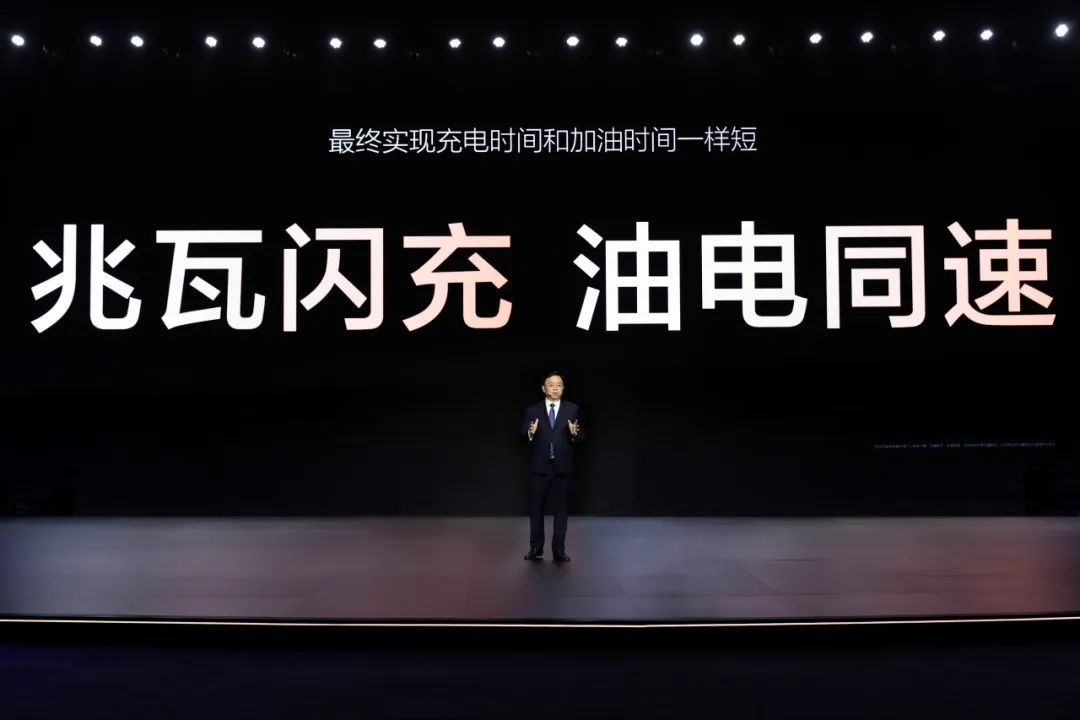
Wang Chuanfu also stated at the event that BYD's ambition is to match the refueling time of gasoline vehicles, achieving "oil-electric parity" in charging speed.
Crucially, this Megawatt Flash Charging is not just a concept; it will be first integrated into BYD's Han L EV and Tang L EV. Both models have already started pre-sales and will be available in early April.
After the battle of intelligence, it seems the next frontier will return to the essence of automobiles.
01 Extreme Speed
1000V voltage, 1000A current, 1000kW charging power, 10C charging rate, over 30,000 RPM.
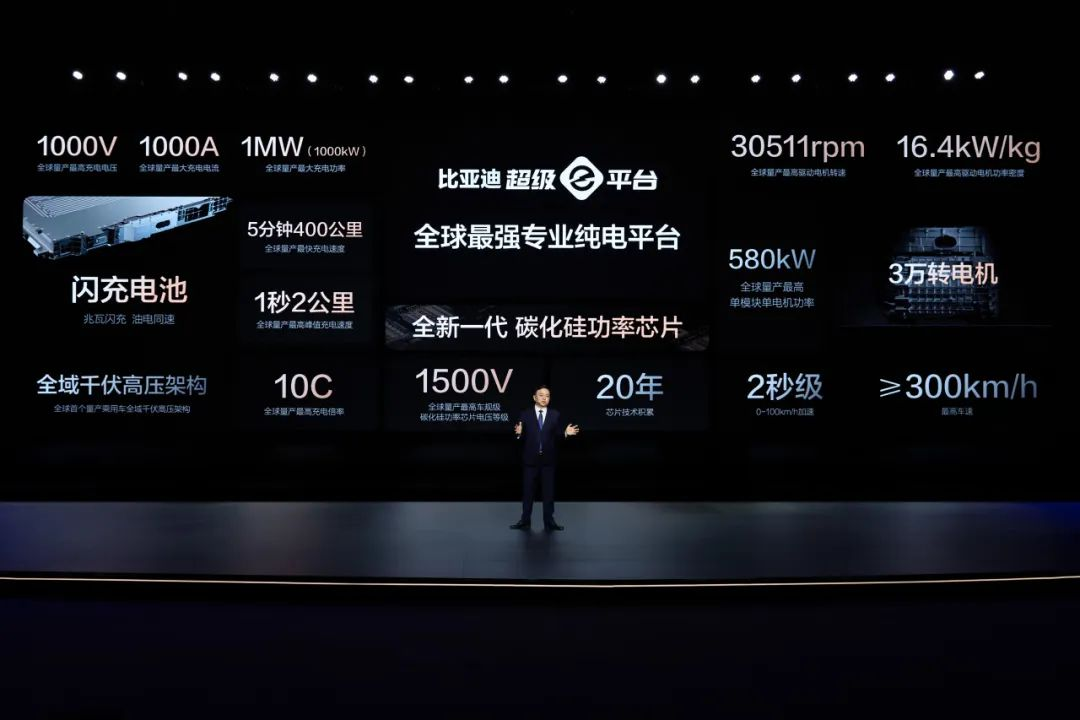
Each of these parameters, individually, represents the zenith of industry technology. Yet, BYD has seamlessly integrated them all onto one platform – the Super e-Platform.
Charge for 5 minutes, drive for 407 kilometers.
These impressive figures all serve one core purpose – to achieve a 10C charging rate, which BYD has dubbed "Megawatt Flash Charging Technology".
To achieve this, three conditions must be met: sufficiently high voltage, sufficiently large current, and dedicated charging piles for deep electrification integration.
A voltage of 1000V and a current of 1000A are prerequisites for a 10C charging speed, and neither can be lacking. With both "1000s," the maximum charging power of models under the Super e-Platform can reach 1000kW.
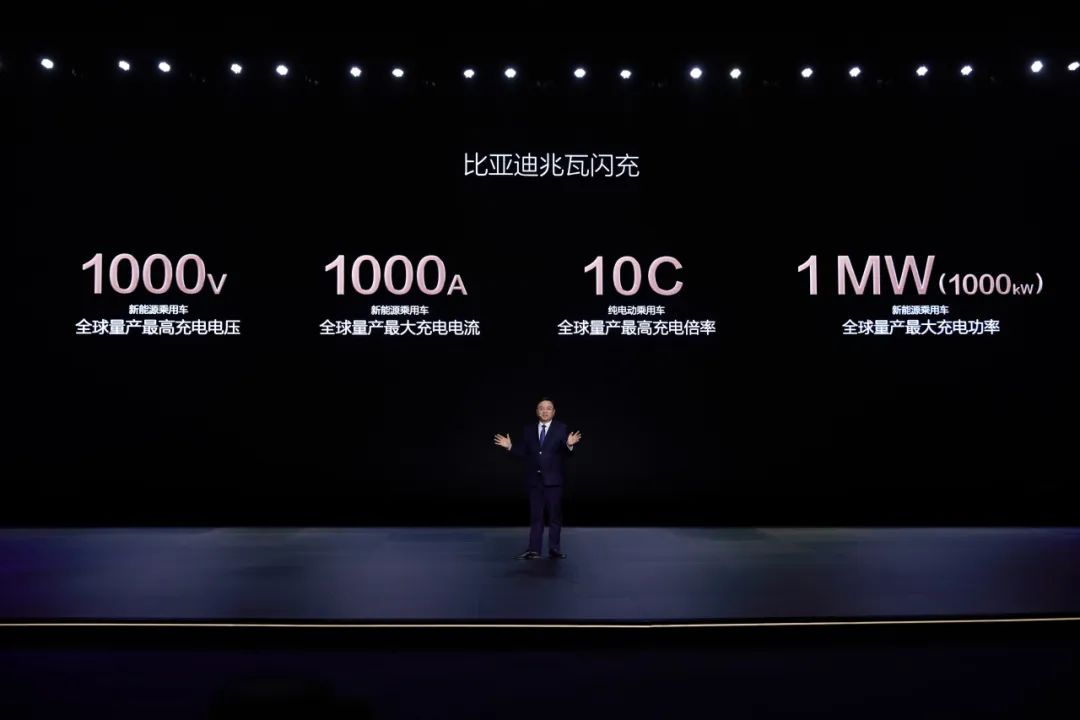
1000kW can also be expressed as 1 megawatt, explaining why BYD is proud of the term "Megawatt Flash Charging," evoking the aura of the "ten thousand yuan households" of the 1980s.
Currently, the fastest charging rate among top-tier electric vehicles on the market is 6C, with a mainstream maximum power of 400kW-500kW. While this is already very fast, it still lags behind gasoline vehicle refueling.
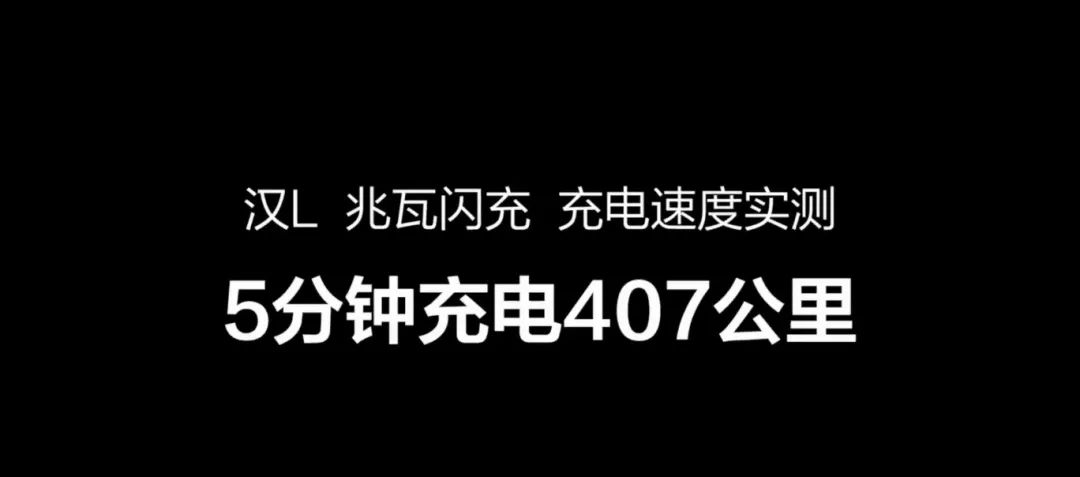
Megawatt Flash Charging Technology achieves the fastest charging speed among globally mass-produced vehicles. BYD's actual tests showed a charging speed of 2 kilometers per second, a range of 407 kilometers after 5 minutes of charging, and a maximum charging power exceeding 1000kW. This charging efficiency is already comparable to gasoline vehicles.
Moreover, BYD also stated that they will be the only automaker with exclusive Megawatt Charging Technology for a considerable period.
This is because many technologies on the Super e-Platform are fully self-developed by BYD. Unless other automakers overcome significant technical challenges and launch technically equivalent modules, it is unlikely for them to achieve a charging power of 1000kW.
Megawatt Charging Pile
To achieve sufficient voltage and current, BYD has also invested heavily in infrastructure.
Complementing the Megawatt Flash Charging Technology is the "Flash Charging Battery." BYD redesigned the LFP Blade Battery, creating "high-speed ion channels" within the battery pack. The battery cells utilize electrolyte and separators with enhanced conductivity, and the structure and materials of the electrodes and SEI film have also been redesigned, reducing the internal resistance of the battery cells by 50% compared to previous versions.
Reducing internal resistance and increasing the speed of electron migration thus doubles the maximum current. Additionally, based on direct refrigerant cooling technology, the heat exchange area is increased by over 100%, the heat exchange performance is improved by over 90%, and the battery life under high temperatures is also increased by 35%.
To support ultra-high-power charging, BYD has independently developed and mass-produced a new generation of automotive-grade silicon carbide power chips. This chip boasts a voltage rating of up to 1500V, making it the first mass-produced automotive-grade silicon carbide power chip with the highest voltage rating in the industry.
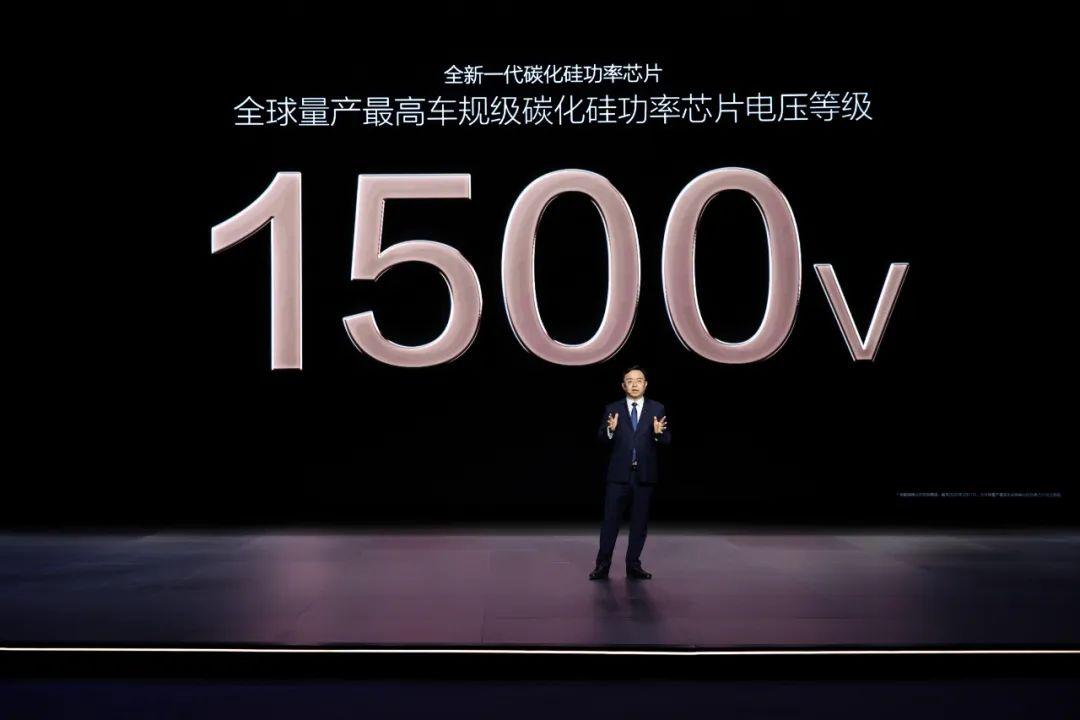
As mentioned earlier, such extreme charging speeds cannot be achieved solely with high voltage and high current; dedicated charging piles are also crucial.
Accordingly, BYD has launched their first self-built pile, the "Megawatt Flash Charging Pile," which is also the world's first fully liquid-cooled Megawatt Flash Charging terminal system.

The charging pile can output a power of 1000kW, and the maximum output capability of the pile itself can reach 1360kW. In reality, the charging pile relies on the power grid and cannot achieve such a high output power alone. However, BYD has found a solution.
They added an energy storage cabinet with a capacity of 225kWh to the charging pile, creating a "1 host + 1 energy storage cabinet" setup. This energy storage cabinet can provide 800kW of charging power to the charging pile, combined with the maximum 560kW from the national grid, achieving a maximum output power of 1360kW.
BYD also announced their initial station construction plan at the launch event: Over 4,000 Megawatt Flash Charging Stations will be built. BYD will also open up the technology for Flash Charging Piles and invites others to "join us in building them together".
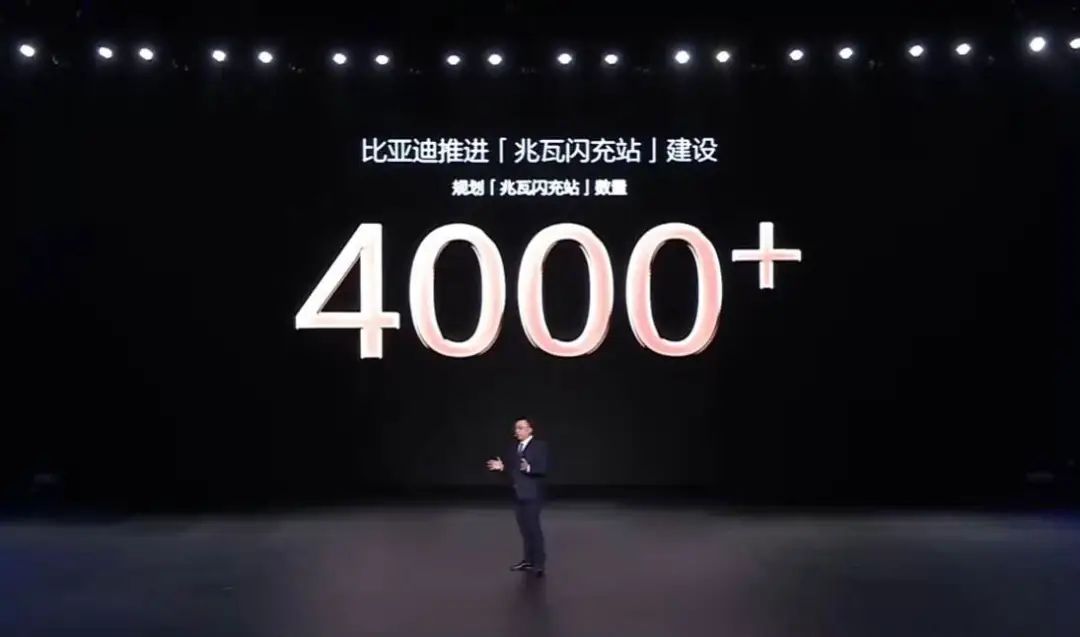
Currently, BYD's headquarters in Pingshan, Shenzhen, has commenced trial operations of a 1000kW charging pile, and 4S stores nationwide will prioritize the deployment of gigawatt-level ultra-fast charging stations, ensuring that each city has at least one station.
What if there are no Megawatt Flash Charging Stations nearby? BYD stated that models built on the Super e-Platform will support "dual-gun charging" – this is also the first time BYD has equipped models other than the Tengshi and Nio with dual-gun charging capabilities.
Other ultra-fast charging piles can also be converted into flash charging piles. For example, Huawei's 600kW ultra-fast charging pile can achieve Megawatt Flash Charging through dual-gun charging. Since the upper limit is sufficiently high, it can accommodate any third-party charging pile.
Additionally, there is intelligent voltage boost technology, which utilizes the vehicle's motor as a transformer to boost the external charging voltage to the kilovolt level required by the vehicle, achieving energy replenishment efficiency comparable to official fast charging piles.
02 BYD Han with 2.7s Acceleration
Wang Chuanfu highlighted that the Super e-Platform boasts four "world firsts": in addition to the Super Kilovolt Architecture, Flash Charging Battery, and Megawatt Flash Charging System, there is also an "electric drive system with over 30,000 RPM," which is already in mass production.
The maximum RPM of the motor reaches 30,511 RPM, currently the highest among globally mass-produced drive motors. The maximum output power of a single motor can reach 580kW, with a peak torque of 5,500 Nm, surpassing the performance of traditional V12 engines.
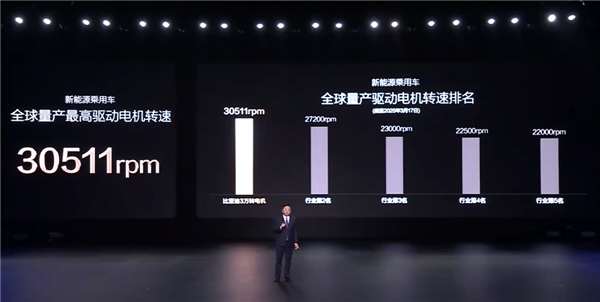
Previously, the most powerful mass-produced motor was Xiaomi's self-developed "V8s" drive motor, with an RPM of 27,200 and a maximum power of 425kW and peak torque of 635 Nm for a single motor.
Thanks to this, Lu Tian, General Manager of BYD Dynasty Sales Division, commented somewhat sarcastically at the launch event, "The only one that can catch up with the standard version of the Han L EV is the Xiaomi SU7 Ultra."
Moreover, its maximum peak power density reaches 16.4kW/kg, also the highest among globally mass-produced drive motors. This means that while the motor's performance is enhanced, its size is reduced, allowing the trunk of models equipped with this motor to have an additional 20 liters of space, just enough to fit a carry-on suitcase.
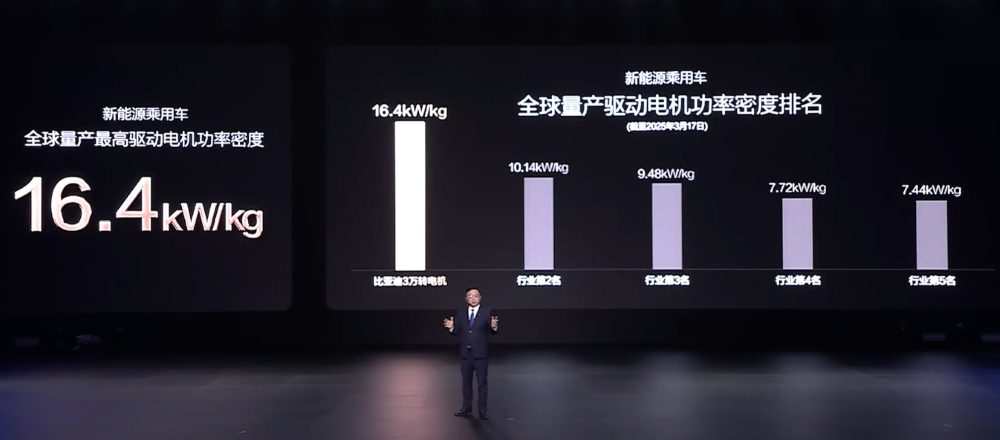
It's worth noting that 30,511 RPM is the design RPM for mass production delivery and not the motor's limit RPM. In the laboratory, it has surpassed 35,000 RPM.
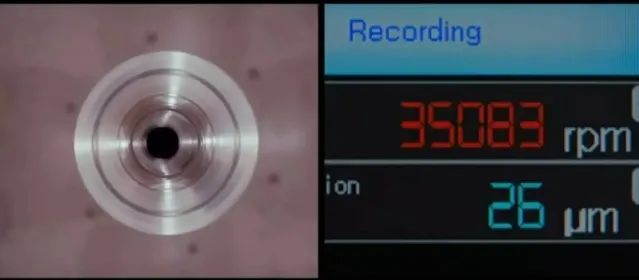
The first models to be equipped with this technology are naturally BYD's highly anticipated key models – the Han L and Tang L. These two models will replace the previous Han and Tang, becoming the new flagships of BYD's Dynasty series. They have also started pre-sales at the launch event, with the Han L EV priced at 270,000-350,000 yuan and the Tang L EV priced at 280,000-360,000 yuan.
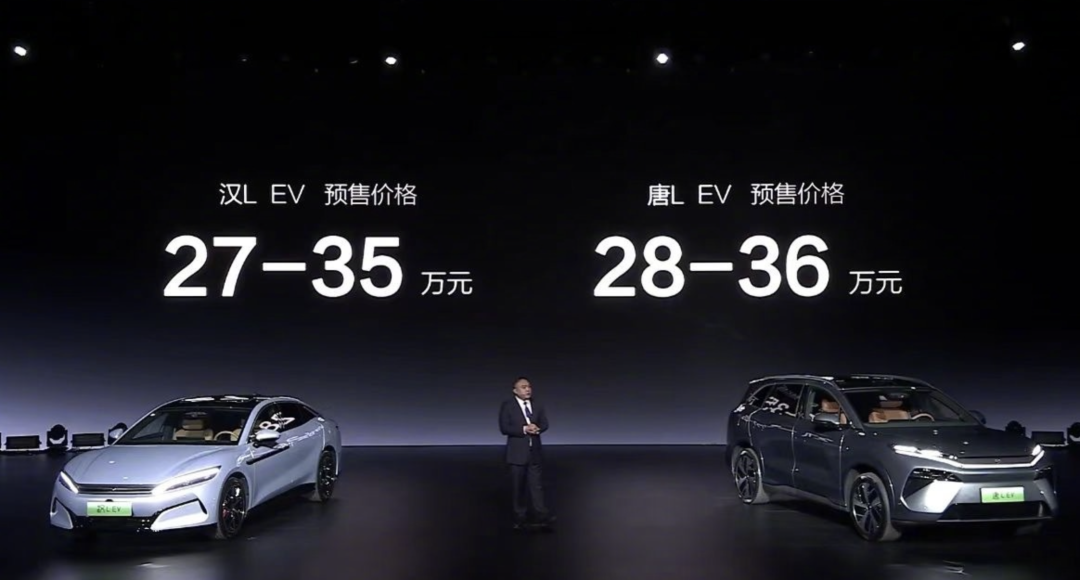
Powered by the over 30,000 RPM motor, the Han L EV and Tang L EV, equipped with dual-motor four-wheel drive, both boast a combined horsepower of 1,102 hp.
In BYD's actual tests, the Han L EV achieves a 0-100 km/h acceleration time of just 2.7 seconds and a top speed of 305.56 km/h. Due to its heavier weight, the Tang L achieves a 0-100 km/h acceleration time of 3.6 seconds, a 100-200 km/h acceleration time of 6.19 seconds, and a top speed of 287.41 km/h.
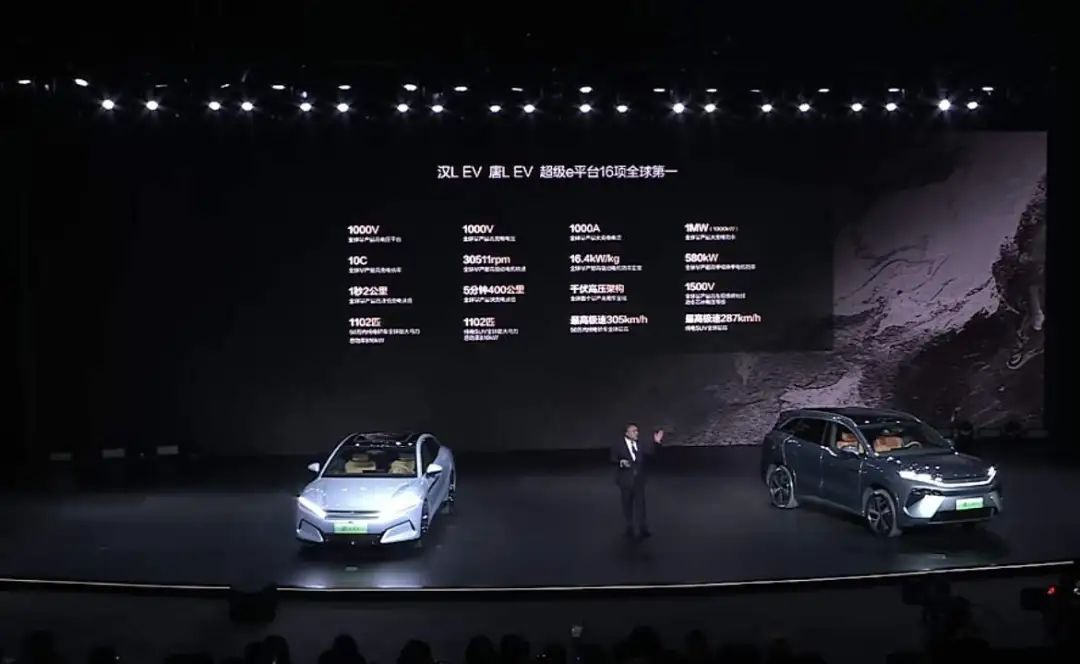
Not only the motor but all the technologies on the Super e-Platform will be first integrated into these two models, which also support Megawatt Flash Charging Technology and have a CLTC range of over 700 kilometers.
Additionally, the two new models are equipped with the "Tian Shen Zhi Yan B" high-level intelligent driving laser version, featuring the DiLink ultra-sensing interactive smart cabin and DeepSeek full-blooded version. Moreover, at the launch event, it was revealed that the BYD Tang L can also be optionally equipped with BYD's on-board drone system, "Lingyuan".
BYD's arsenal is now beginning to be fully revealed. In just 40 days, it has staged three groundbreaking technology launches, continuously surpassing expectations. Faced with such an intense offensive, other automakers must decide whether to follow suit or not. This time, the industry is truly in for a thrilling spectacle.







